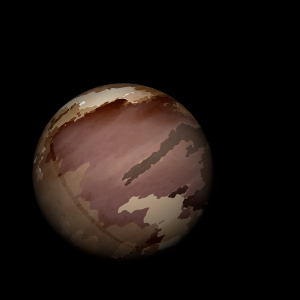|
|
Space Astro
|
Info for exoplanet "Methee To"
| Scientific (actual) data |
|---|
| Name | Kepler-1172 b |
| Planet status | Confirmed |
| Radius | 0.285 |
| Orbital period | 26.0204 |
| Discovered | 2016 |
| Updated | 2021-02-05 |
| Tconj | 2454990 |
| Publication | Announced on a website |
| Detection type | Primary Transit |
| Alternate names | 2MASS J19215388+3745597 b, K02280.01, KIC 2439243 b, KOI-2280 b, KOI-2280.01, WISE J192153.87+374559.6 b |
| Star name | Kepler-1172 |
| Right ascension | 290.48° |
| Declination | 37.77° |
| Mag j | 14.625 |
| Mag h | 14.241 |
| Mag k | 14.14 |
| Star distance | 1292 |
| Star metallicity | -0.04 |
| Star mass | 0.92 |
| Star radius | 0.89 |
| Star age | 4.37 |
| Star temperature | 5558 |
| Star alternate names | 2MASS J19215388+3745597, KIC 2439243, KOI-2280, WISE J192153.87+374559.6 |
| Wikipedia article | Kepler-1172 b |
Back
| |
| Fictional info (?) |
|---|
| Suggested name | Methee To |
| Planet type | Cold planet |
| When viewed from Earth, this proximity to Kepler-1172 means the planet can only be seen near the western or eastern horizon during the early evening or early morning.
The volume of water ice in the south polar ice cap, if melted, would be sufficient to cover the entire planetary surface to a depth of 6 meters.
A prominent result is the "great blue spot", a giant storm that is known to have existed for centuries since it was first observed by radar. |
| Atmosphere | Carbonyl sulfide | 90% |
| Argon | 6.7% |
| Krypton | 2.8% |
| Carbon dioxide | 0.074% |
| Hydrogen peroxide | 2.0E-6% |
| Atmospheric pressure | 0.015 bar |
 |
| No known satellites |
| Google search for Methee to |
|
Website by Joachim Michaelis
|
|
|
|